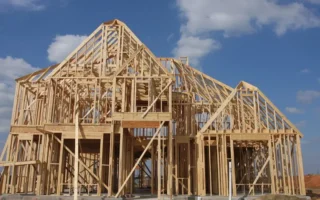Introduction:
Describing architecture through writing is an art form that requires a blend of creativity, precision, and insightful observation. Whether you’re a student, an architect, a critic, or an enthusiast, mastering the skill of architectural description enables you to convey the essence, beauty, and significance of built structures through words. In this guide, we embark on a journey to explore the techniques, vocabulary, and approaches essential for effectively describing architecture in writing.
Understanding the Essence of Architecture:
1.Appreciating Architectural Elements:
Structural Components: Dive into the fundamental elements of architecture, such as columns, arches, roofs, and facades. Understand their structural roles and symbolic significance in shaping the overall composition of buildings.
Materials and Texture: Explore the tactile qualities of architectural materials, from rough-hewn stone to sleek glass facades. Describe the interplay of light and shadow, the smoothness of surfaces, and the richness of textures that define architectural character.
2.Grasping Spatial Dynamics:
Spatial Configuration: Analyze the spatial organization of buildings, considering factors such as circulation patterns, spatial hierarchy, and functional zoning. Describe how spaces flow seamlessly or transition dramatically to evoke different experiences for occupants.
Scale and Proportion: Discuss the scale of architectural elements relative to human proportions, emphasizing the sense of grandeur, intimacy, or monumentality they impart. Highlight instances of harmonious proportioning that create visual balance and coherence.
Techniques for Descriptive Writing:
3. Observational Skills:
Cultivating Awareness: Develop keen observational skills by immersing yourself in architectural environments. Notice the interplay of light and shadow, the rhythm of structural elements, and the nuances of architectural details that reveal the character of buildings.
Sketching and Photography: Use sketching and photography as tools for capturing architectural features and spatial relationships. Document different perspectives, angles, and details to aid in your descriptive writing process.
4.Language and Expression:
Evocative Imagery: Harness the power of descriptive language to evoke sensory experiences and emotional responses in your readers. Use vivid imagery to convey the ambiance, atmosphere, and mood evoked by architectural spaces.
Metaphorical Language: Employ metaphors, similes, and analogies to convey abstract concepts and subjective impressions. Compare architectural forms to natural phenomena, historical references, or cultural symbols to imbue descriptions with depth and resonance.
Practical Tips for Writing about Architecture:
5. Contextual Analysis:
Historical and Cultural Context: Situate architectural descriptions within broader historical, cultural, and socio-economic contexts. Explore how buildings reflect the values, aspirations, and technological advancements of their time.
Site and Contextual Integration: Consider the site-specific characteristics and contextual factors influencing architectural design, such as topography, climate, urban context, and cultural heritage. Describe how buildings respond sensitively to their surroundings and engage with the local environment.
6.Audience Considerations:
Tailoring Your Writing: Adapt your writing style and tone to resonate with your target audience, whether they are fellow architects, academics, clients, or the general public. Strike a balance between technical precision and accessibility to ensure your descriptions are engaging and informative.
Providing Contextual Information: Provide background information, historical anecdotes, and relevant references to enhance readers’ understanding and appreciation of the architectural subject matter.
Conclusion:
Describing architecture in writing is a multifaceted endeavor that requires a deep understanding of architectural elements, spatial dynamics, and expressive language. By honing your observational skills, mastering descriptive techniques, and contextualizing architectural descriptions, you can convey the beauty, significance, and cultural relevance of built environments with clarity and eloquence. Whether you’re penning architectural critiques, scholarly essays, or creative prose, the art of describing architecture opens doors to a richer understanding and appreciation of the world around us.




